Are you trying to understand why your website traffic is not growing? Are you planning a link-building campaign to power up your website’s backlink profile?
You are doing it wrong if you do not start with a backlink audit.
A poor backlink profile can have many low-quality, irrelevant, or toxic links. They can hurt your site’s SEO and can lead to search engine penalties.
It is frustrating to invest time and resources into a new batch of backlinks only to have its potential undercut by harmful backlinks you’re unaware of.
Enter the world of backlink auditing.

In this article, you’ll learn how to identify and disavow harmful links, how we at SirLinksalot perform a backlink audit when we start working with a new client, and guide you through each step of conducting a thorough audit of your backlink profile.
Let’s go!
Key Takeaways
- Use tools like Google Search Console, Ahrefs, and more to help you find your links
- Collect a list of all your links
- Identify the spammy and harmful links
- Check for incorrect and unnatural patterns
- Evaluate link quality and analyze anchor text profile
- Develop a plan
What Is a Backlink Audit?
A backlink audit is a systematic examination of all the inbound links pointing to your website from external sources.
Inbound links, or backlinks, are critical for your website’s visibility and search engine rankings.
A backlink audit involves evaluating each link. The goal is to assess its quality, relevance, and impact on your site’s SEO.
We at SirLinksalot conduct backlink audits often. We audit our own sites as well as our clients’ sites that are applying for our Managed Link Building service.
Purpose of Backlink Audits
Here are some of the main purposes of backlink audits:
- Assessing the quality and relevance of existing backlinks
- Identifying toxic or spammy backlinks that may harm SEO
- Analyzing anchor text distribution and optimizing it
- Discovering broken or redirected backlinks
- Evaluating the overall health of the website’s backlink profile
- Identifying opportunities to disavow harmful backlinks
- Detecting negative SEO attacks and taking corrective actions
By conducting regular audits, you can find and address any issues with your backlink profile and avoid any potential pitfalls.
We’ll dive deeper into how to find and address these issues later on in the article.
Importance of Maintaining a Healthy Backlink Profile
One big problem we see when auditing websites is very low-quality backlink profiles. They are often dominated by spammy-looking Web 2.0 links or duplicate articles from cheap PBN sites.
Such profiles can prevent you from ranking entirely or even be the source of penalties from search engines.
They may signal to Google that you are trying to manipulate your rankings, and of course, Google does not like that at all.
That’s why we always preach the importance of link diversity alongside building quality links.
The Role of Backlinks in SEO Strategy
Backlinks are a cornerstone of any effective SEO strategy.
Even though Google says they are no longer a top three ranking factor, most SEO professionals agree this is a lie. Backlinks are, in fact, one of the most important ranking factors there are.
Google can’t tell the truth about things like this, or people would attempt to game their algorithm more than they already do.
Backlinks act as a vote of confidence from other websites, indicating that your content is valuable and trustworthy.
Search engines, like Google, consider these votes when determining how to rank your site in search results.
However, many people get into trouble by building links unnaturally. Competitors can also launch negative SEO attacks to harm your domain’s reputation.
Identifying Bad and Toxic Links
Bad backlinks, or toxic backlinks, are links that can harm your website’s SEO.
They are often characterized by their low quality, irrelevance, or spammy nature.
Bad links can include those from link farms, low-quality directories, unrelated websites and articles, or websites with harmful content, malware, or questionable practices.
They dilute the authority of your backlink profile and can pose potential risks to your website’s visitors.
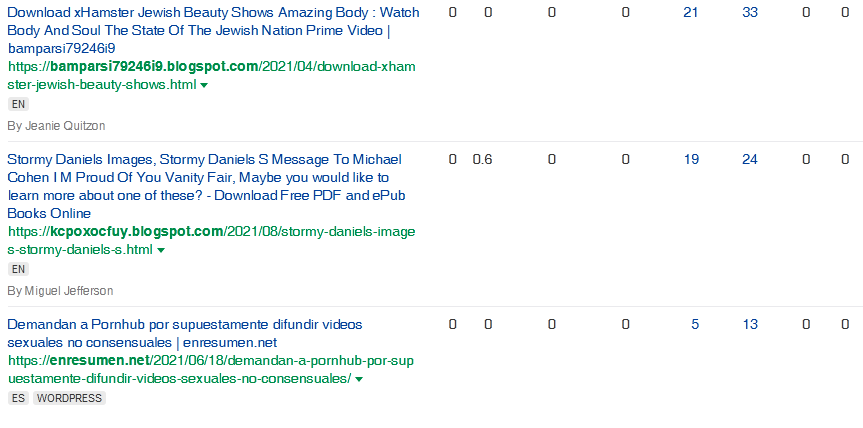
Toxic links can often look like normal backlinks to the untrained eye. This makes their identification a little trickier than you might think.
It’s important to find these types of links, but you should also note that Google seems to ignore them in many cases these days.
We haven’t seen many unnatural link building penalties in the past years. But, these links could still potentially hold you back or become completely devalued with time.
The Tools You Need for Backlink Audits
Conducting a successful backlink audit requires the right set of tools to gather, analyze, and interpret data.
In this section, we highlight the essential tools you’ll need.
Google Search Console

Google Search Console is a great tool for webmasters and SEO professionals.
It shows the inbound links pointing to your website. It also provides reliable information about your organic traffic – traffic to your pages ranking on Google.
Through the ‘Links’ section, you can get data on external links, internal links, and the domains that link to your site.
This data is helpful for identifying your backlink sources, but we don’t prefer to use Search Console for this purpose. We mainly use it for information about your site’s health (traffic, clicks, impressions, etc).
Third-Party SEO Tools
Several third-party SEO tools are designed specifically for backlink analysis, among other things.
These tools give information about the quality, quantity, and relevance of your backlinks. They are the main thing we use to perform backlink audits.
Some popular options are Ahrefs, Moz, Semrush, and Majestic, with Ahrefs being our tool of choice because it has much more backlink data than the others.

These tools help you:
- Discover new backlinks to your site.
- Analyze the authority and trustworthiness of linking domains.
- Check anchor text diversity and keyword usage in backlinks.
- Identify toxic or harmful links using proprietary algorithms.
- Use helpful third-party metrics to conduct your analysis like DR, toxicity score, organic traffic, etc.
Google Disavow Tool
In some cases, you may need to disavow harmful links to protect your website’s SEO.
Google’s Disavow Tool allows you to submit a list of links you want Google to ignore when assessing your site’s backlink profile.
We believe it’s a last-resort option to combat toxic links that cannot be removed manually.
I want to reiterate that last point: we use the disavow tool as an absolute last resort.
As mentioned before, Google is good at ignoring many bad links. We’ve seen many people shooting themselves in the foot by disavowing many good backlinks because they thought they were toxic.
So please proceed with caution when using this tool so you don’t do more harm than good!
Conducting a Backlink Audit: Step-by-Step Guide
In this section, we’ll provide a step-by-step guide on how to perform a backlink audit. We will focus on finding and handling bad, toxic, and harmful links and will also cover evaluating your overall backlink profile.
Collecting a List of Inbound Links
The first step in conducting a backlink audit is to gather a comprehensive list of all the inbound links.
You can get this data from various sources, including:
- Google Search Console: Access the ‘Links’ section to view the external links pointing to your site.
- Third-Party SEO Tools: Use tools like Ahrefs, Moz, Semrush, or Majestic to retrieve a list of backlinks.
As mentioned previously, we highly suggest using Ahrefs due to its extremely large backlink database and ease of use.
Once you’ve collected the data, compile it into a spreadsheet for organized analysis.
We prefer Google Sheets.
Identifying Spammy and Harmful Links
The next step is identifying spammy and harmful links within your collected data.
Use your chosen SEO tools to assess the quality of each backlink.
Look out for these things to help with identifying if a link is bad/spam/toxic, but note that you have to look at things as a “bigger picture”:
- Irrelevant Content
- Unnatural Anchor Text
- Low-Quality Design
- Excessive Advertisements
- Duplicate Content
- Irrelevant/Spammed-Out Comments or Links from Forums
- Automated Linking
- Link Farms
- Excessive Web 2.0 links
- Overuse of Keywords
- Unusual TLDs
- No Contact Information
- Rapid Link Growth
- Irrelevant Traffic or Little/No Traffic
- Traffic Coming From Strange Keywords
- Foreign Language Sites
- Hidden/Invisible Links
- Non-Contextual Links
- Excessive Nofollow Links
Remember that checking just one of these boxes does not necessarily mean it’s a bad link!
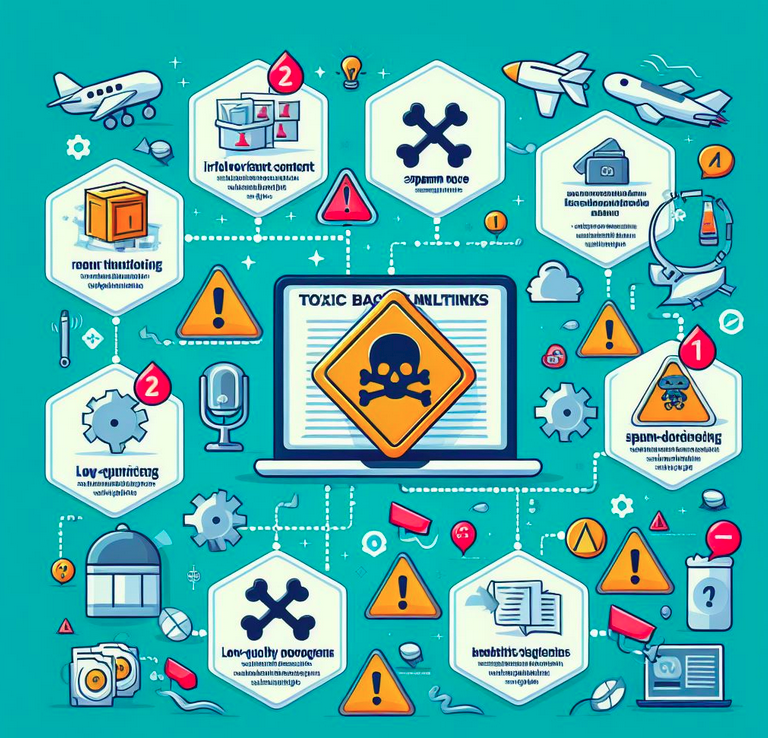
Check for Unnatural Patterns
Examine your backlink profile for any unnatural patterns. These are things you’ve usually done yourself that could signal an unnatural backlink profile.
Here are some things to look for:
- Sudden and unnatural spikes in the number of backlinks
- Lack of link diversity
- Excessive use of exact-match anchor text
- Reciprocal link exchanges in large quantities
- Repeating the same anchor text many times
- Footer and sidebar links on many websites
- Lack of homepage link building
- Excessive link building to inner pages
Sometimes, these links come from good sources. But, you may have built them unnaturally and created patterns that could create issues with Google.
Evaluating Link Quality
After identifying potentially harmful links, you can evaluate the quality of the remaining backlinks.
Consider the following factors when evaluating link quality:
- Relevance of website/article
- Anchor text
- Domain/Page Authority
- Traffic
- Dofollow Links
This will give you a good idea of which links are most likely carrying you the most.
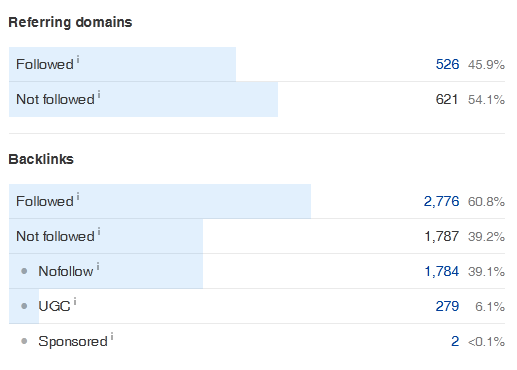
Analyzing Anchor Text
Anchor text plays a vital role in how search engines understand the content of the page being linked to.
A diverse and natural anchor text profile is essential for a healthy backlink profile.
We’ve mentioned anchor text before, but here are some pointers to ensure your anchor text aligns with best practices:
- Diversify Anchor Text: Avoid over-optimized anchor text and instead use a variety of anchor text types, including branded, naked URLs, and generic phrases.
- Check for Exact-Match Keywords: Excessive use of exact-match keywords (and even partial-match keywords) in anchor text can raise red flags with search engines.
- Natural Language: Anchor text should reflect natural language and context. It should enhance the user experience and not appear as a deliberate SEO tactic.
Develop a Plan
After you’ve audited your entire backlink profile, it’s time to develop an action plan.
Some SEOs like to disavow links regularly. But, we almost never do, do very often at all except in very extreme, blatant cases of poor link building that is likely affecting the website’s SEO performance.
In most cases, SirLinksalot’s strategy is to move forward by building quality backlinks to counterbalance our findings from the audit.
Some examples:
- Too many exact match anchors? Build more branded, URL, and miscellaneous anchors.
- Too many links to inner pages? Build more homepage links.
- Lots of low-authority link spam? Focus on building high authority links.
By doing essentially the opposite of what was done before, you can move your website back into a good reputation with Google.
The Consequences of Neglecting Backlink Audits
Here are some problems that we often see arising from not regularly auditing and managing your backlink profile.
Decreased Organic Traffic
One of the most immediate and noticeable consequences of neglecting backlink audits is a significant decrease in organic traffic to your website.
When your backlink profile contains many bad, toxic, or irrelevant links, search engines may discount your links, causing your site to drop in search rankings.
As a result, you will get fewer visitors to your website.
Penalization by Search Engines
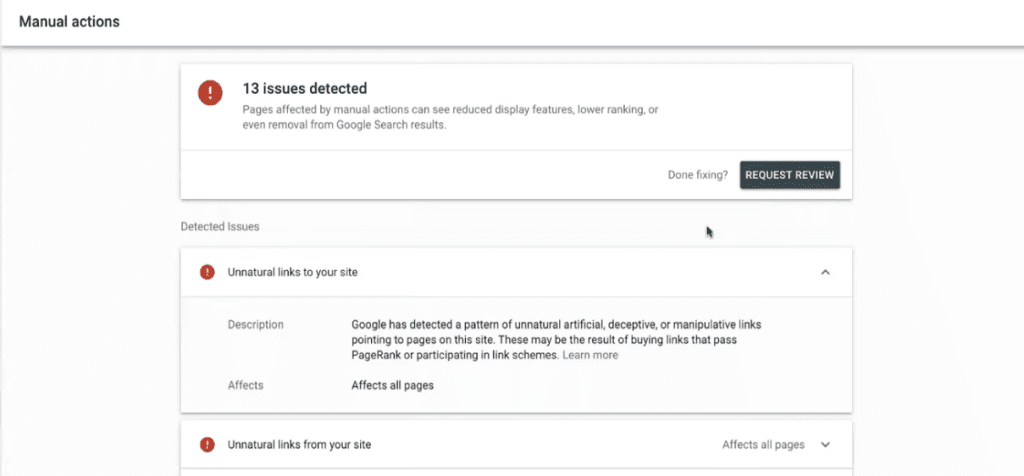
Search engines are stringent about the quality of the websites they display in their search results.
Neglecting your backlink profile can result in penalties from search engines. This is especially true if search engine algorithms detect manipulative link-building tactics, spammy links, or other guideline violations.
These penalties can be challenging to recover from and may require significant effort to restore your site’s ranking.
Negative Impact on Domain Authority
Domain authority is a critical metric that reflects your website’s overall credibility and trustworthiness.
Neglected backlink profiles often contain many low-quality or irrelevant links, which can lower your domain authority.
Lower domain authority can hurt your site’s ability to rank well in search results. It also hurts your ability to establish authority in your niche.
Implications for Your Link Building Strategy
If your existing backlink profile is riddled with low-quality or harmful links, any new high-quality links you acquire may not have the same positive impact they would on a clean slate.
Simply put, your efforts to build a strong backlink profile can be impeded by the presence of bad and toxic links.
Loss of Online Credibility
Neglecting your backlink profile can damage your website’s online credibility and reputation.
When users encounter your site through spammy or harmful links, it can erode trust and deter them from engaging with your content.
The quality of your backlinks reflects the quality and credibility of your website as a whole.
Tips for Building a Healthy Backlink Profile
A healthy backlink profile is a cornerstone of successful search engine optimization (SEO) and a strong online presence.
In this section, we provide valuable tips and strategies for proactively building and maintaining a healthy backlink profile.
Prioritize Quality Over Quantity
Quality should always take precedence over quantity when acquiring backlinks. While some experts claim that every link can bring value, we believe in focusing on obtaining links from reputable, authoritative, and relevant sources within your niche.
One high-quality, contextually relevant backlink often carries more SEO weight than numerous low-quality links.
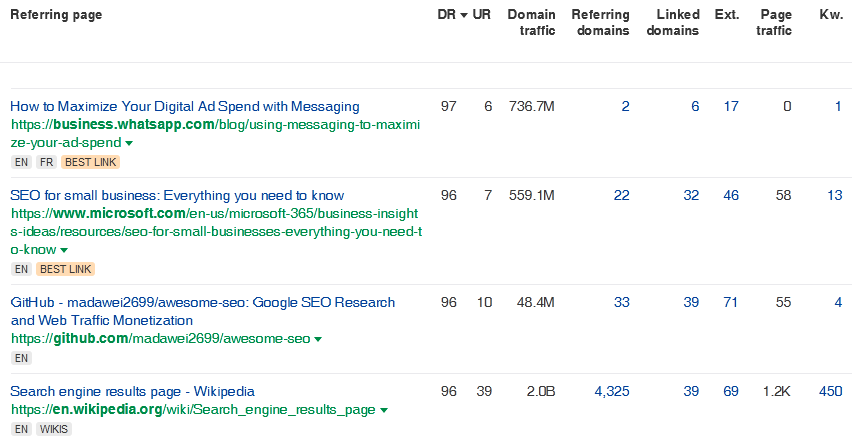
Develop High-Quality Content
Creating compelling and informative content is key to attracting high-quality backlinks naturally. When your content provides value to your target audience, other websites are more likely to link to it.
With that in mind, be sure to invest in creating content that stands out and offers unique insights or solutions.
Guest Blogging and Contributor Opportunities
Consider guest blogging and contributing to authoritative websites within your industry.
Guest posts often allow you to include a backlink to your website in your author bio or within the content itself.
These backlinks can be valuable if the hosting websites are respected and relevant.
Reach Out to Influencers and Industry Leaders
Connect with influencers and industry leaders in your niche. Volunteer to provide them with some value. Building relationships with these figures may give you chances to co-author and collaborate. You may also join in joint ventures. These ventures can result in high-quality backlinks and increased exposure.
Build a Resourceful Resource Page
Create a resourceful and comprehensive page on your website that offers valuable information, tools, or guides related to your industry.
Other websites may naturally link to your resource page as a reference for their readers, enhancing your backlink profile.
Broken Link Building
Identify broken links on other websites within your niche and offer your content or resources as a replacement.
This strategy not only helps other websites maintain their user experience but also allows you to secure a new backlink.
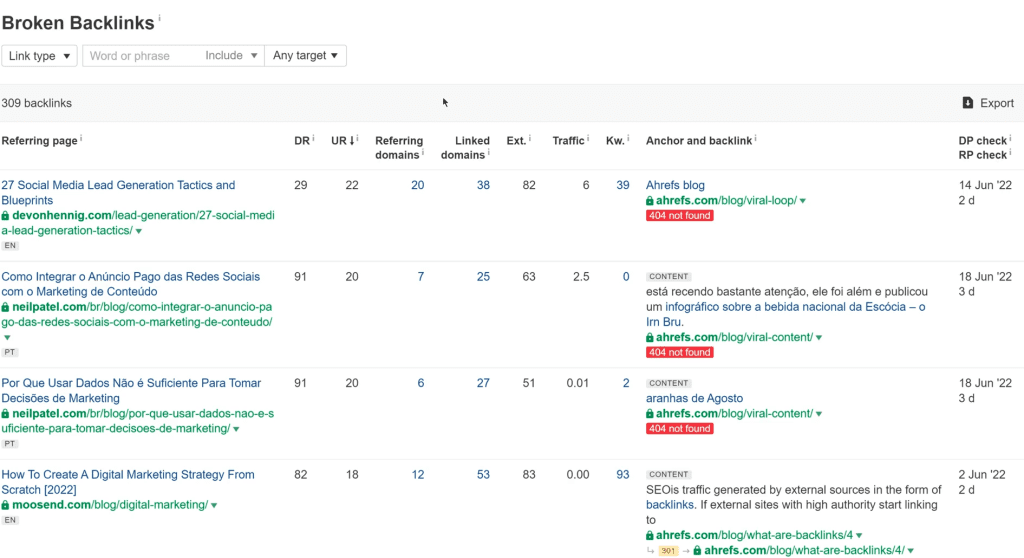
Utilize Social Media Platforms
Leverage your presence on social media platforms to share your content. Social signals may not directly impact SEO. But, sharing your content makes it more visible and likely to be linked to.
That is why we build social signals to all clients’ websites in our Managed Link Building program.
Monitor Your Backlink Profile Continuously
Regularly monitor your backlink profile using tools like Google Search Console and third-party SEO tools.
This lets you stay informed about new backlinks and any changes in your profile, ensuring that it remains healthy.
Focus on Diversity of Anchor Text
Anchor text profile evaluation is one of the cornerstones of our off-page SEO audit checklist.
We believe every website should maintain a diverse anchor text profile to appear natural to search engines. Avoid over-optimized anchor text, which can raise red flags.
We like to use a variety of anchor text types, including branded, naked URLs, and generic phrases.
Stay Compliant With Search Engine Guidelines
Adhere to search engine guidelines when building your backlink profile. Avoid engaging in link schemes, excessive link exchanges, or other manipulative practices.
While we do not believe that link exchanges between relevant sites can harm the sites, it is important to avoid excessive use of this link building technique.
Staying compliant with best practices can help safeguard your website from penalties.
Perform Regular Backlink Audits
Regular audits will help you identify and address any new bad or toxic links that may have appeared over time. This will ensure the ongoing health of your backlink profile.
Wrapping Up
At SirLinksalot, we believe that backlink auditing is a crucial component of a solid SEO strategy.
In this article, we have guided you through the key aspects of performing a comprehensive backlink audit. We’ve stressed the importance of high-quality backlinks, the need to identify and handle toxic links, and the indispensable role of tools like Google Search Console and Ahrefs.
Neglecting backlink audits may have severe consequences. These can include less organic traffic and search engine penalties.
Regularly audit your backlinks to maintain a healthy backlink profile. This will ensure your site’s SEO health and longevity.
To learn more about how we do backlink audits, please check our Ahrefs guide.
Use these insights and keep your site’s backlink profile relevant and natural-looking. This will result in higher rankings and greater visibility for your site.

